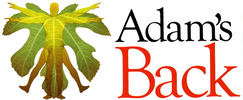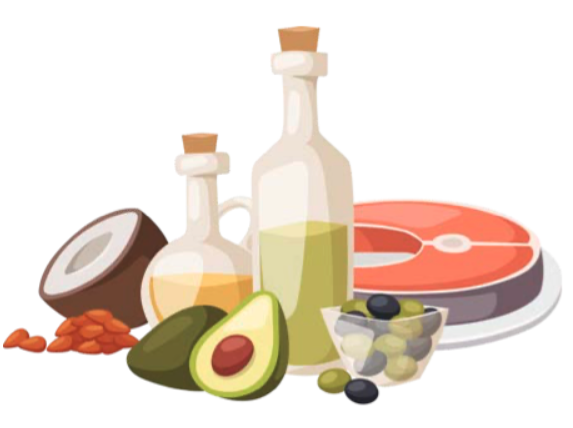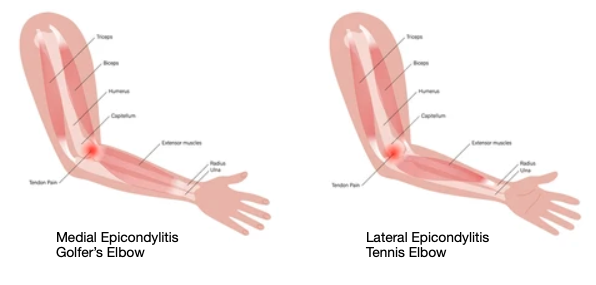|
25/8/2021 0 Comments The Three 'Omegas'The omega fatty acids are essential nutrients which we need to maintain good health. They’re unsaturated fats, and are obtained through our diet.Why aren’t they numbered in order? They’re numbered according to the placement of double bonds within their structure – the number is a part of their chemical description.
Omega-3 plays a variety of roles in the body; it’s associated with brain development, heart health, and bone and joint health. Omega-3 has also been shown to help slow memory decline in people with dementia and improve mental health. Our bodies can’t produce omega-3, so you need to obtain it from your diet; however, it’s thought that most people following a standard Western diet are low in this nutrient. Ensuring adequate omega-3 intake throughout pregnancy is also essential for your baby’s brain development. Omega-6 also needs to be obtained from your food, however most people’s intake is actually higher than it needs to be from a Western diet. Getting the ratio of Omega-6 to Omega-3 is important, as a high level of Omega-6 relative to Omega-3 can contribute to inflammatory conditions. Omega-6 is found in most oils, meats, dairy products, eggs, cereals, and processed foods. Omega-9, like omega-6, is common in most people’s diets, and is one of the nutrients created within our body. It’s found in almost all oils and nuts, and it would be rare to have an inadequate intake. The best sources of omega-3, -6, and -9 As omega-6 and -9 are already abundant in most people’s diets, ensuring adequate omega-3 intake is usually the most important goal. The best dietary source of omega-3 is oily fish, but it can also be found in walnuts, flaxseeds, and chia seeds. The term ‘oily fish’ includes mackerel, tuna, sardines, and salmon – all of these are an excellent addition to a healthy diet. Omega-3 supplements may be useful for some people; but should be high quality, and only taken in addition to a healthy diet – the wide range of nutrients found in food cannot be properly replicated by pills. The World Health Organisation recommends eating two portions of oily fish per week, not only for its omega-3 content but also for vitamins A, D, and B, its lean protein content, and a range of other minerals and essential nutrients
0 Comments
25/8/2021 0 Comments The Ins and Outs of SwaybackHave you ever wondered about the curve of your lower back − what’s normal, or what role it plays in your health? Or maybe this is the first time you’ve given it any thought. In that case...Place your hands over the small of your back. You’ll notice a hollow where it curves gently. This graceful curvature is created by the lumbar spine. The vertebrae and discs sit on top of one another; held together by ligaments, fascia, and muscles. This sweep is called the lumbar lordosis.
The lumbar lordosis is designed to help us remain upright, aligned and balanced. However, when this curve is excessive it’s called increased lumbar lordosis, which is commonly known as swayback. Swayback can cause lower back pain. The greater the curve, the higher the risk of injury and discomfort. This happens because the compressive load forced through the facet joints and intervertebral discs increases too. Long term, the physical strain associated with swayback can cause ongoing pain and reduced function. Treatment depends on how serious the curve is and how it happened. The more common causes are:
If you’re concerned about a possible increased lumbar lordosis, be sure to mention this to us. Early intervention can help prevent complications later. Do you wake in the morning with a sore, stiff neck? Do the muscles ache and twinge and take a little time to loosen up? You’re not alone – neck pain is common and will affect most people at some stage in their lives.Stiffness can occur for a number of reasons; while it’s not normally serious, it’s important to know when urgent investigation is required. When neck stiffness is accompanied by trauma, fever, nausea or vomiting, unexplained fatigue, confusion, dizziness, or a new headache, it may indicate a serious underlying condition. While rare, these symptoms can point to fracture, meningitis, infection, or a tumour.
For most people though, a stiff neck is painful but non-threatening. The soft tissues can become injured or tense. The joints may be inflamed. Tautness can result. A sore, stiff neck — particularly on waking — can signal poor posture and sleeping position, the wrong pillow, osteoarthritis (wear and tear), or even stress. Do you lie on your side, back or front? The latter is one of the worst positions. Sleeping with your head twisted to the side places a lot of strain on the vertebrae in your neck. While reading this, turn your head to the right. See how far it naturally rotates? Place your left hand on your left cheek and gently push. Can you feel the increased tension in your neck? This extra force is exerted for many hours when you sleep on your front, and can often be the cause of neck and back pain. Side or back sleeping is better. Your pillow may also be to blame. The main function of your pillow is to support your neck and keep it aligned with the rest of your spine. Selecting the right one can have a significant impact on your sleep quality and neck pain. It should support your spinal curves and keep you comfortable. If you find yourself suffering from persistent neck pain, ask us for help and advice. We can assess your pain and provide appropriate care. We can also assess your sleeping posture, and help you to find a pillow that works for you. 25/8/2021 0 Comments Can Alcohol Cause Weight Gain?Everyone knows the health risks associated with high alcohol consumption – the effects go beyond risky behaviour and hangovers. High alcohol intake is associated with many chronic health conditions. You could also be adding weight problems to that.We’ve all seen the ‘beer bellies’ of serious drinkers, but did you know that even a moderate amount of alcohol can contribute to significant weight gain? There are several reasons for this:
Amount of kilojoules – alcohol is high in kilojoules and doesn’t have any real nutritional value. Your body converts the kilojoules into energy or stores it as fat. Drinking your kilojoules means you can take in a lot more without feeling full. Altered metabolism – not only are there lots of kilojoules in alcohol, it actually affects the way your liver metabolises them. This means you’re more likely to store energy – from alcohol and food – as fat. This continues long-term, not only when you’ve just had a drink. Snacking – it’s very easy, after a few drinks, to reach for unhealthy snacks and greasy takeaways. Alcohol alters our blood sugar levels, making us hungry. Even small amounts of alcohol can lead us to choose the worst possible food types. Effects on sleep – some people think a nightcap helps them get to sleep, but alcohol affects the quality of your sleep. It causes night-time wakefulness, fluctuations in blood sugar levels, thirst, and frequent trips to the toilet. Not only does a bad night’s sleep make you feel awful the next day, you may actually eat more – as if to compensate for being tired. Think before you drink – drinking alcohol of any kind comes with risks. It’s worth checking the guidelines to know how many standard drinks you’re really having. Moderating alcohol intake – or going without – has well known health benefits... even if you’re not looking to lose weight, you’ll be gaining a healthy body. 25/8/2021 0 Comments Tennis Elbow and Golfer's ElbowDo you have pain at your elbow? Is the discomfort worse on movement and everyday use? Does the problem stubbornly refuse to subside, even after rest? Do you frequently use your arms? You might have tennis or golfer’s elbow.These conditions have similar causes, effects and treatments. They occur in the same tissue type, are related to repetitive strain, involve teeny micro-tears, and can be incapacitating.
What's the difference? The difference is their location. Tennis elbow effects the lateral epicondyle; the bump on the outside of your elbow. Golfer’s elbow effects the medial epicondyle; the bump on the inside of your elbow. Pain on the outside of your elbow The symptoms of tennis elbow are related to the muscles that extend your wrist. They merge into the common extensor tendon, which connects at the lateral epicondyle. When these muscles become repetitively stressed, degenerative changes occur at the connection point. Actions that may act as a trigger include forceful grasping, gripping, and rotation. Using a screwdriver, doing a lot of manual labour, typing, or playing a racquet sport. Just like tennis. Tenderness near the outside elbow bump is often associated with tennis elbow. Pain may worsen, becoming burning and severe. Shaking hands, turning a door handle, working on a computer, and playing sport can increase the pain. Pain on the inside of your elbow The symptoms of golfer’s elbow are related to the muscles that flex your wrist. They merge into the common flexor tendon, which connects at the medial epicondyle. Injury to this area may have a traumatic origin, like hitting a golf club into an unseen rock or thumping it into the ground. Or it might occur from overuse. Chopping wood with an axe, operating a chainsaw, gardening, competitive swimming... and, yes, golf. Golfer’s elbow can often cause soreness near the inside elbow bump. The pain can extend down the forearm on that side. Grip strength may become diminished. Golfer’s elbow is more common in women, type 2 diabetics, people aged between 45 to 64, those with a higher body mass index, and smokers. How can we help? We use our arms every day. When simply making a cup of tea, drying yourself after a shower, lifting your child, turning a door knob, and engaging in work, hurt, every day activities can seem almost impossible. The Chiropractors at Adam's Back are qualified to assess and diagnose lateral and medial epicondylitis. We can discuss with you appropriate options for managing the pain, and prepare a suitable recovery plan, which may include exercises for you to do at home. |
AuthorAdam's Back is a team of dedicated complimentary health professionals. Our aim is to support you in finding drug-free solutions for better health. Archives
July 2024
Categories |
Search by typing & pressing enter






 RSS Feed
RSS Feed